7 telltale signs of bed bugs in your home
Here’s how you can tell if you’ve got bed bugs
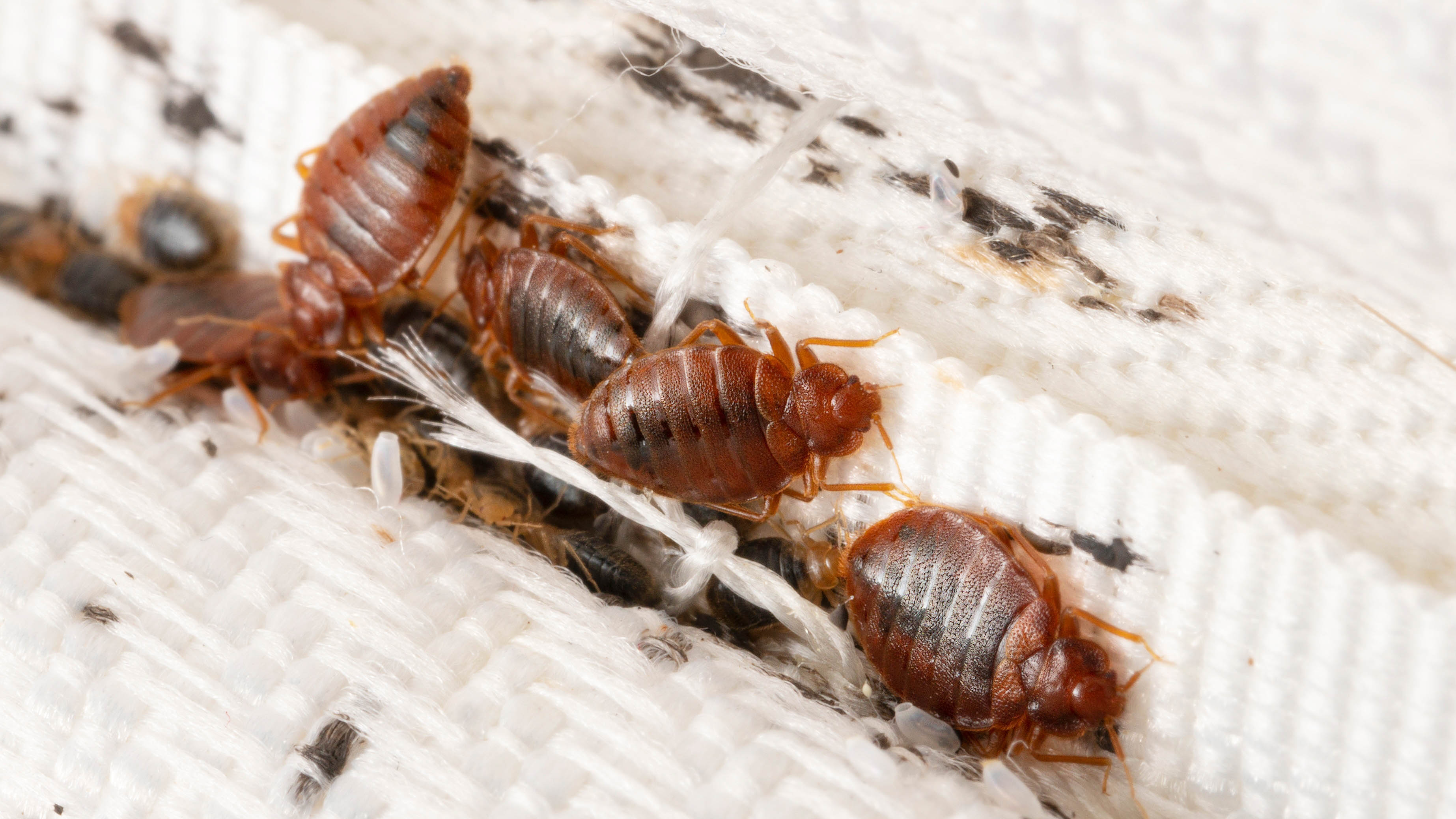
Pests can be a real nuisance, even in the most hygienic of homes. It seems, no matter the precautions we take, an unwelcome guest can slip by at one time or another, causing no end of trouble. Some are, no doubt, more serious than others. Roaches can carry and spread disease, while mice can do this as well as chew through items around the home. But, one pest which is amongst the worst to invade your home is bed bugs.
While ‘don’t let the bed bugs bite’ is a sweet way to say goodnight, it stems from a real paranoia. Bed bugs are not easy to spot, and once they’re established, they’re incredibly difficult to remove — requiring you to vacate the property for fumigation in extreme circumstances. As well as knowing how to get rid of bed bugs, it’s useful to know what to look for in the first place, so you can act fast should you suspect bed bugs. That’s why we’ve covered 7 telltale signs of bed bugs.
Plus, here's 5 ways bed bugs can invade your home. Bed bugs are also one of the 5 pests that bite you in your sleep.
1. Blood stains
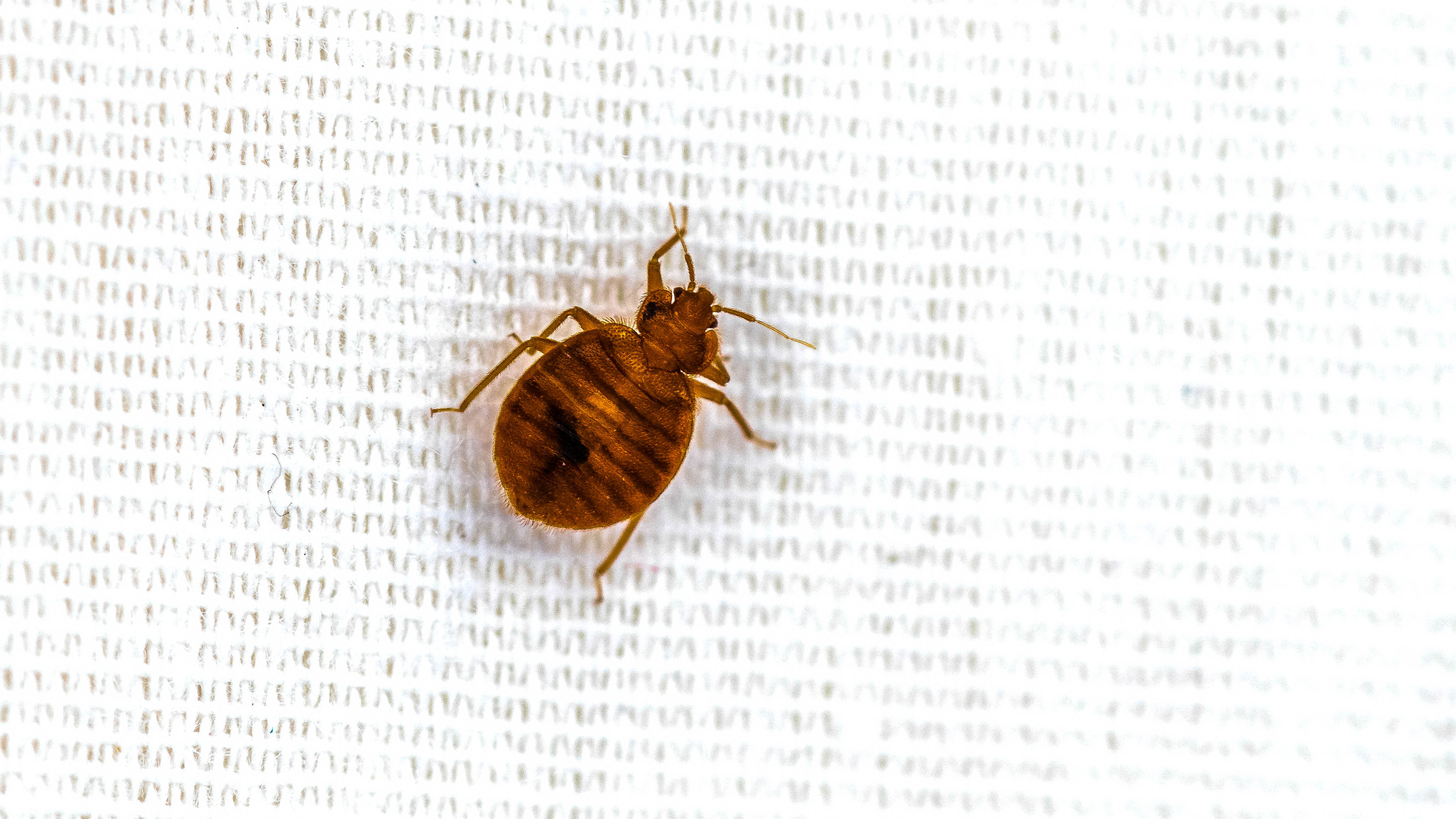
Bed bugs feed on the blood of animals as well as humans. They hide in all kinds of crevices near to where the host sleeps, be it wood, metal or soft furnishings. That means they’re not just confined to your bed — they could well be hiding several feet away, taking up residence next to your couch, if you often sleep here too.
Ultimately, they’re waiting for you to go to sleep, after which they will emerge from hiding and bite you. This leaves behind telltale tiny blood stains on your bed sheets, which may be dark red or brown in color. Bed bugs aren’t picky where they bite either — they will settle for any areas of exposed skin, be it hands, feet or face. So blood speckles may appear all over your sheets and even your pillow. You may also crush bed bugs as you move at night, which can contribute to the stains too. Ultimately, if you notice unexplained specks of blood on your sheets, bed bugs could be the reason.
2. Eggs
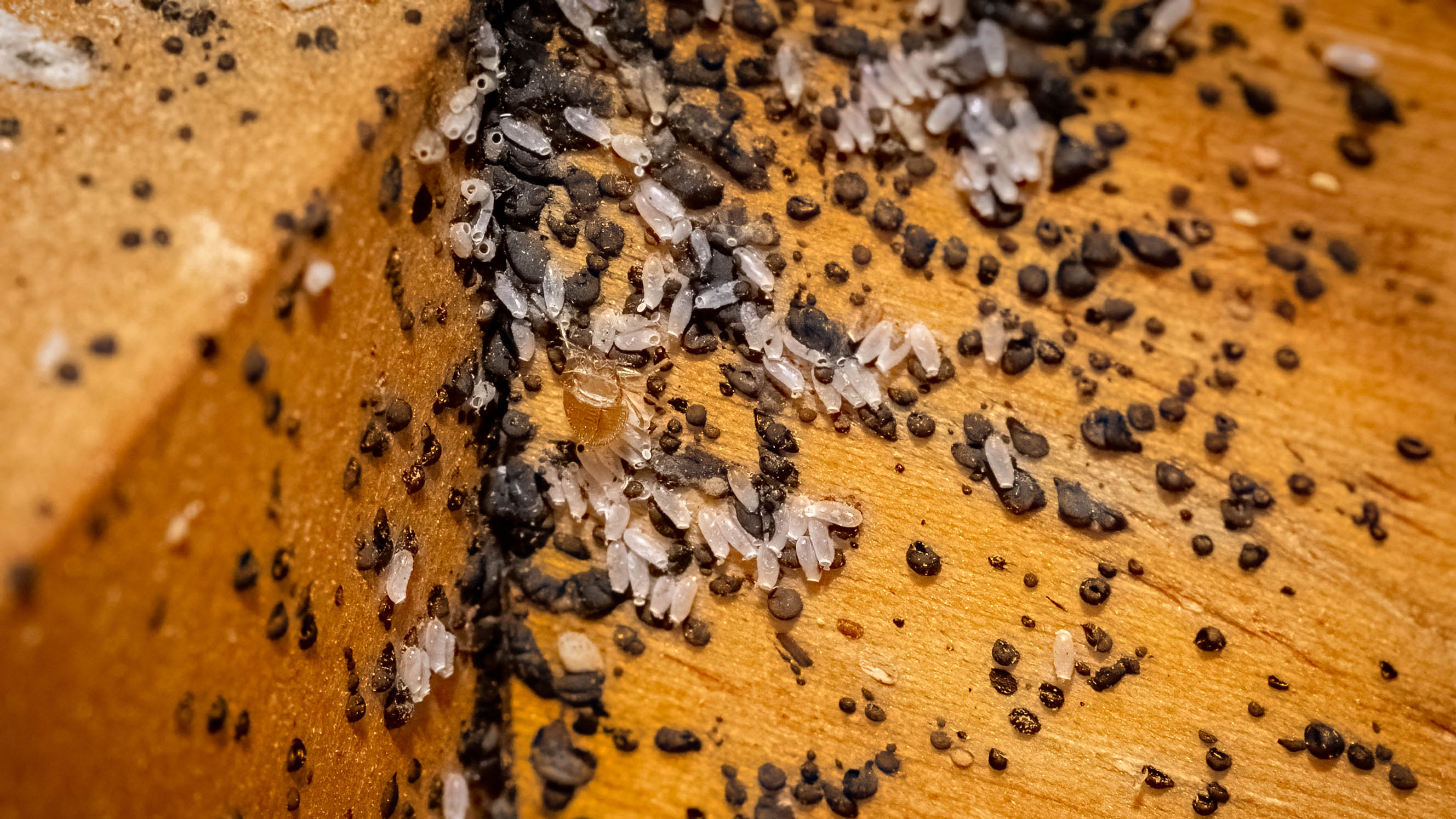
Female bed bugs can lay several eggs a day, which might not sound like much, but considering they can lay up to 250 in their lifetime, it’s not hard to believe these pests multiply quickly. The eggs will hatch within two weeks, and those hatchlings are ready to lay eggs themselves in 4-7 weeks. Each egg is tiny, roughly about 1mm in length, but they’re still visible to the eye, whether whole or hatched.
Unhatched eggs are semi-transparent and often shiny due to the liquid used to stick the eggs to the surface. They can be found singly or in clusters and will hatch at random intervals rather than all at once. So you might find a mix of eggshells amongst unhatched eggs — residual eggshells will more likely be dull and flat in nature. These will be laid in a sheltered and undisturbed space, close to the host for a ready food source. If you spot bed bug eggs, make sure you act promptly before they hatch. You can wash the bedding on a hot wash, use a steamer, a mattress cover, or use a chemical method.
Sign up to get the BEST of Tom's Guide direct to your inbox.
Get instant access to breaking news, the hottest reviews, great deals and helpful tips.
3. Shed skins
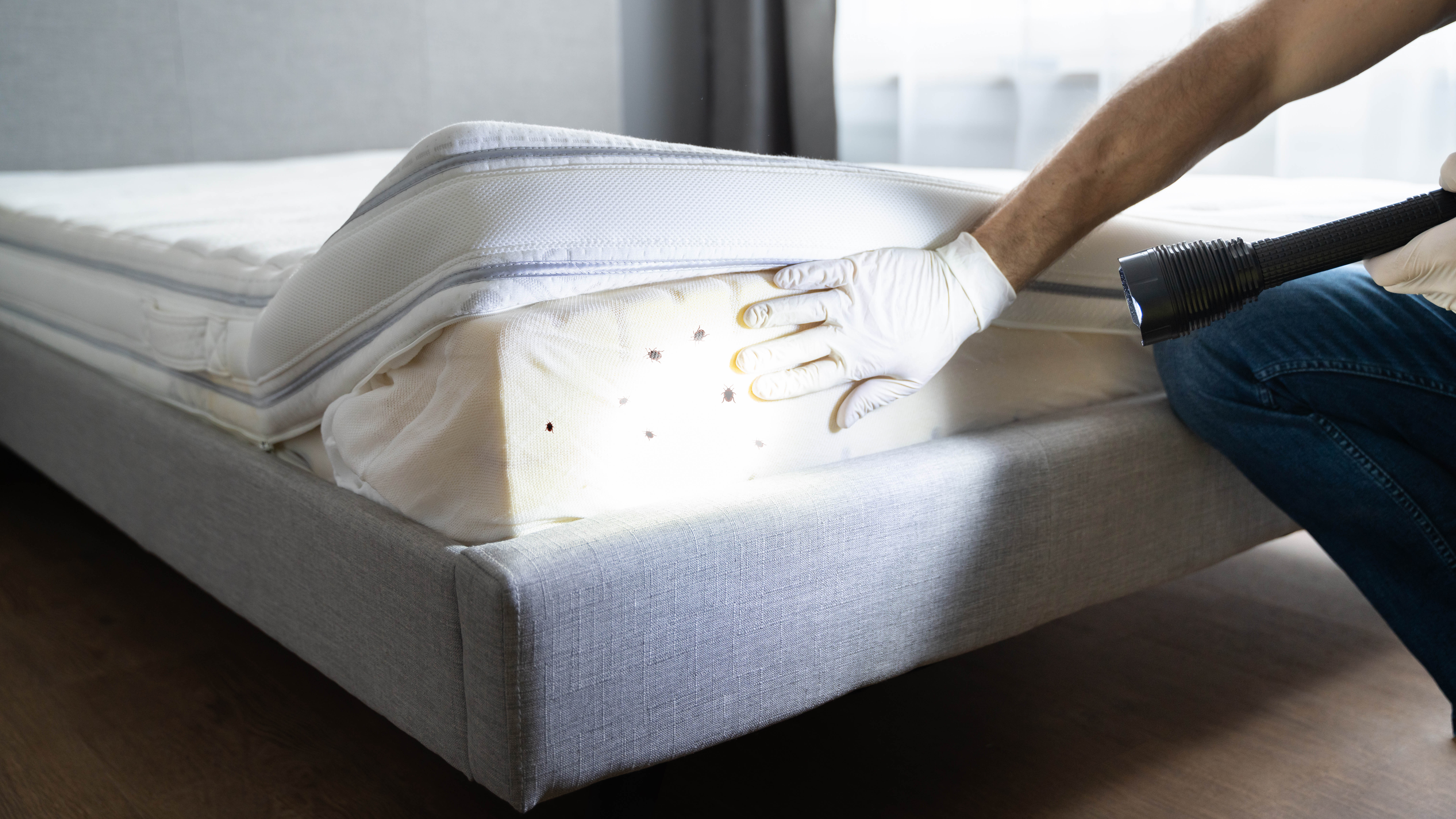
Bed bugs don’t just leave behind eggs, they will shed their exoskeletons as well. A hatchling will shed its skin 5 times before it reaches maturity, which can leave behind plenty of evidence if you’re dealing with an infestation. These remains aren’t obvious, but they’re still visible to the eye — about 1mm in length once again, although the final size depends on the stage of growth for the bed bug.
These shed skins will take much the same shape as the bed bugs themselves, but they will be lighter in color, often translucent with a yellow tint. It will literally be a shell that the bed bug has cast off. Bed bugs require blood to grow and shed, so these moltings can be found anywhere they congregate, close to the food source, whether that’s along the mattress seams or along the baseboards.
4. Feces
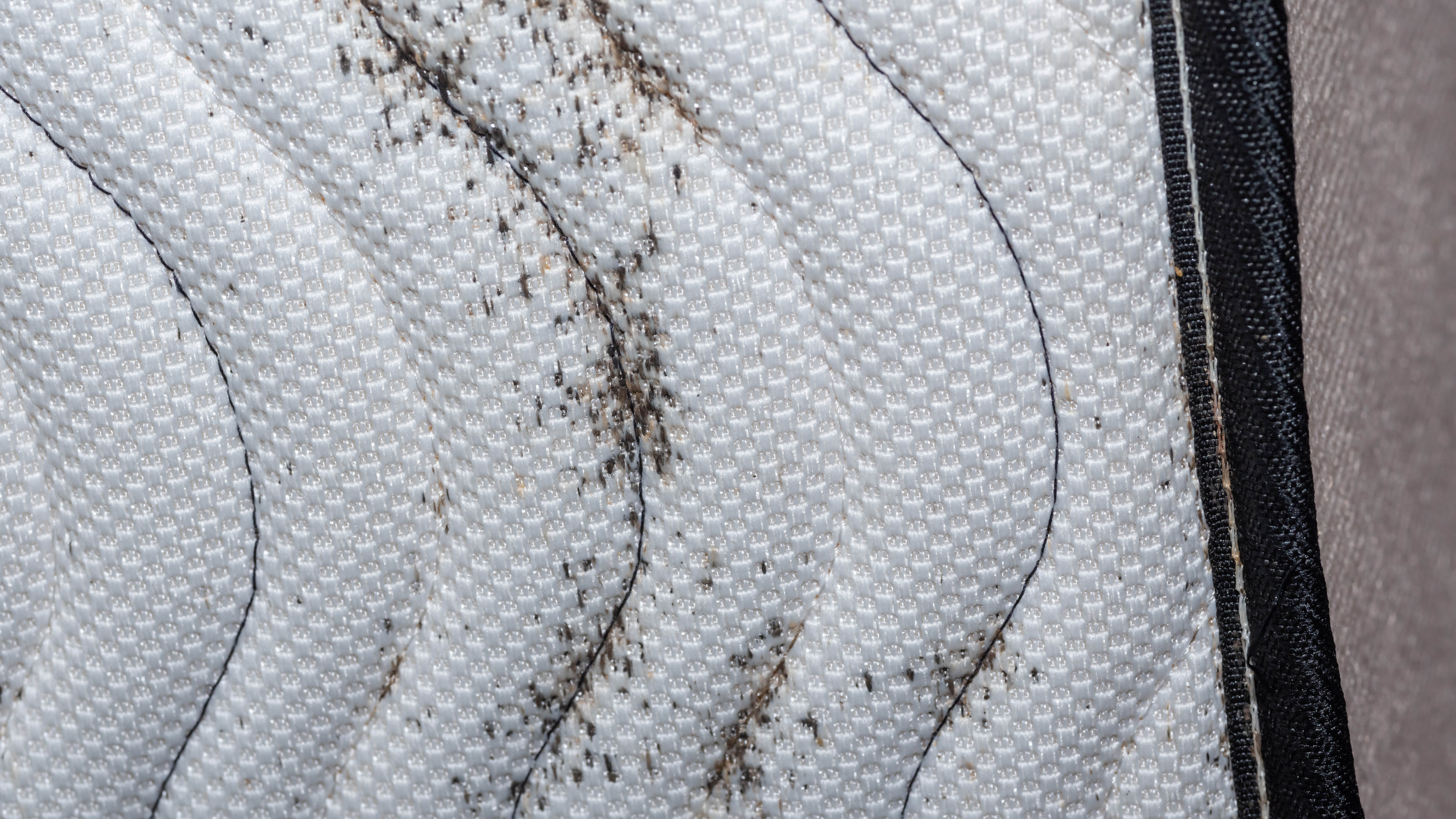
Bed bugs will also leave behind tiny feces which can be quite apparent on white bed sheets. These look like small black spots — almost like an ink stain when clustered. Remember to check under your mattress seams, including the tags, as well as in obvious hidden areas for such signs. Bed bugs aren’t restricted to your mattress either, they can defecate around the headboard or even on the walls. Such stains are often mistaken for mold or mildew, but if it has a red tint, that indicates bed bugs.
If you suspect pest feces, but you’re unsure of whether it’s roaches or bed bugs, feeling the feces, while wearing gloves, can give you a good indication. If it’s smooth, it’s blood-based and likely comes from bed bugs, but if it’s grainy and gritty, you’re dealing with roaches.
5. A musty odor
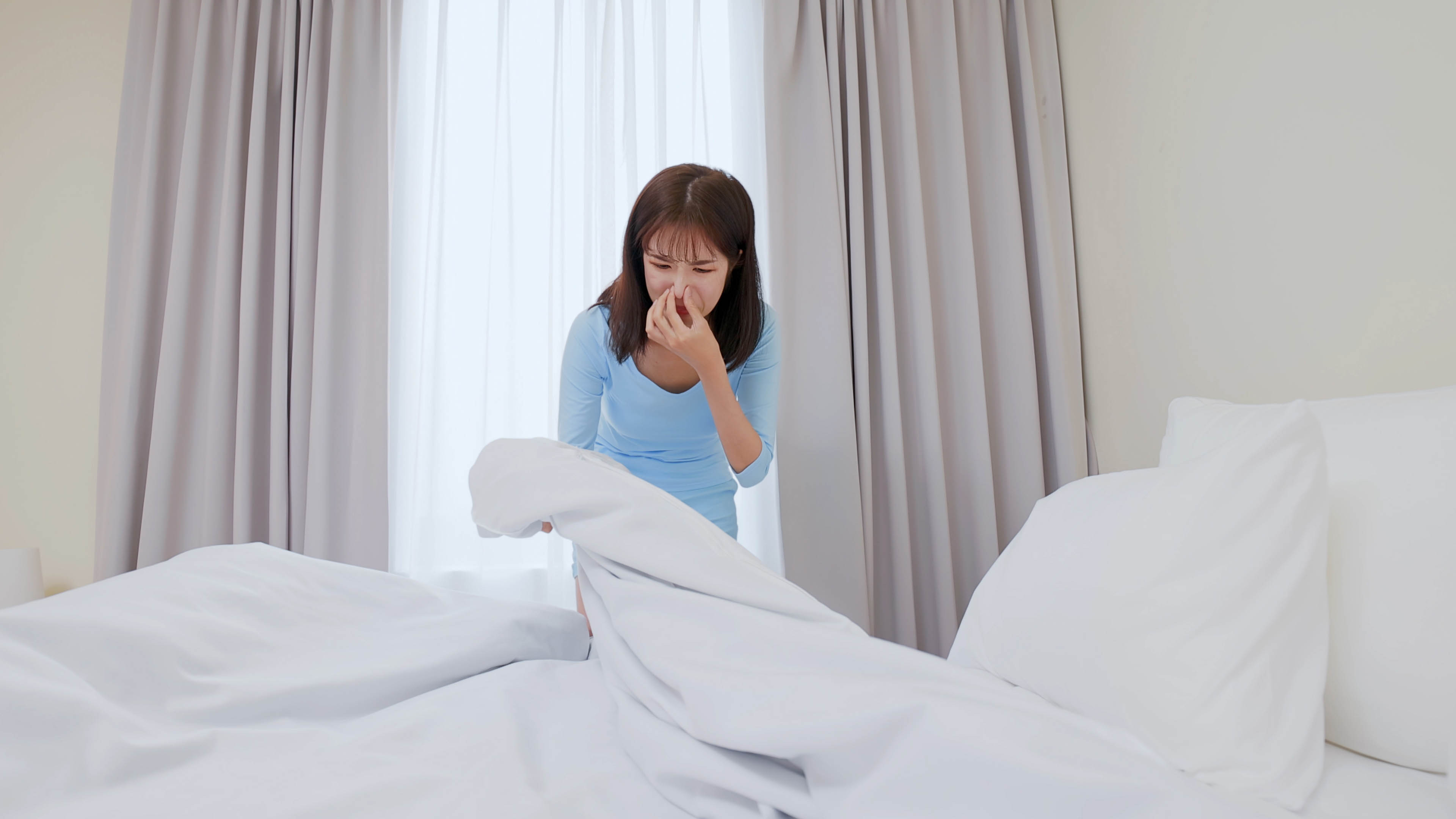
Bed bugs don’t smell great to say the least. They leave behind a musty, yet slightly sweet odor which is all the more potent when dealing with large numbers. It’s described as smelling similar to that of coriander or expired raspberries, as well as moldy laundry. Bed bugs release alarm pheromones which contribute to this aroma — this gives it its sweet, acidic essence. While the feces left behind will be a product of blood, introducing a rusty scent. The bodies of dead bed bugs won't help the situation.
The strength and potency of this aroma will vary depending on the extent of your bed bug problem. Just because you can’t smell them doesn’t mean they’re not there, so always keep an eye out for the other signs.
6. Bites
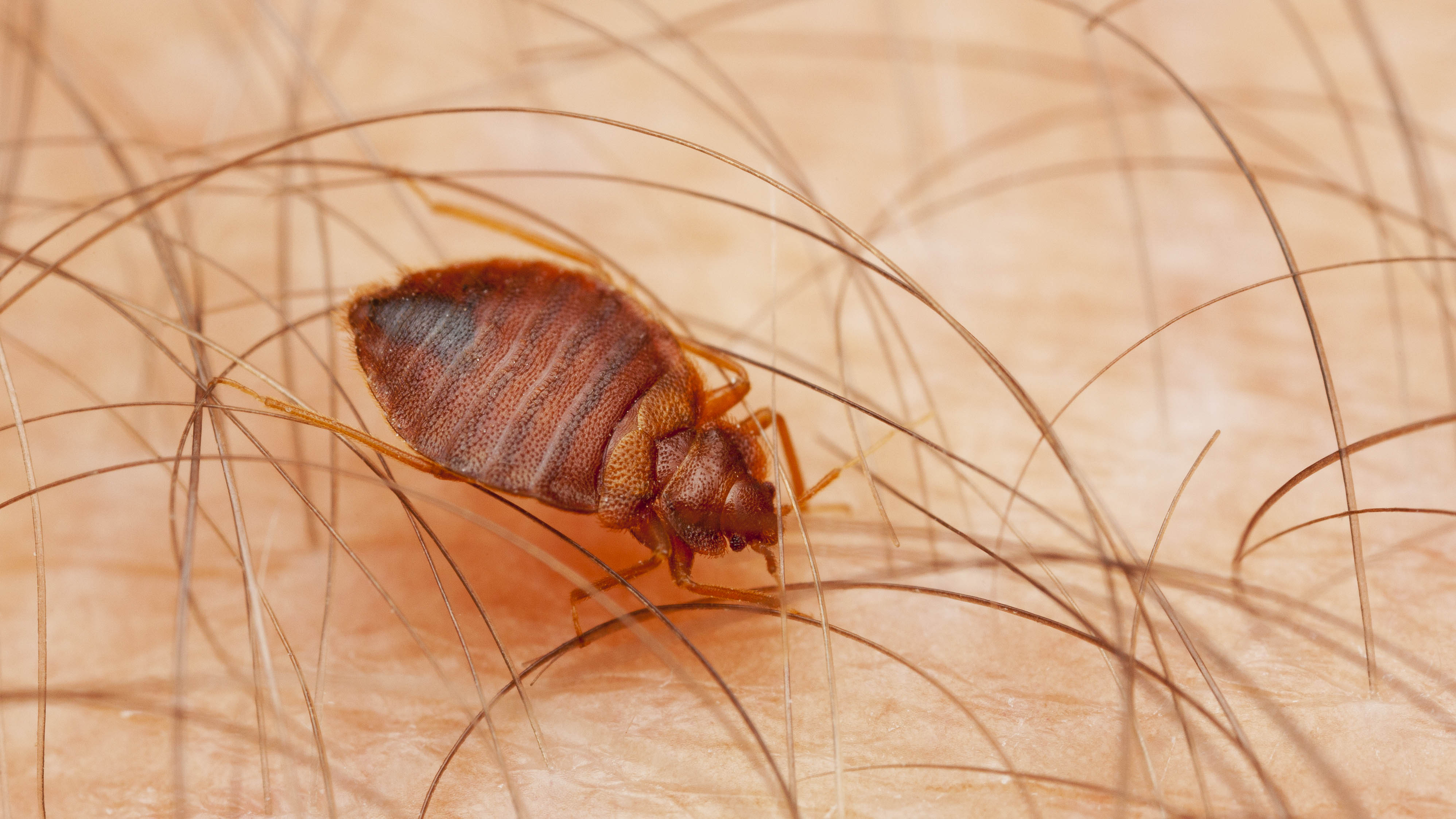
Needless to say, if you’re waking up with bites on your body, you should investigate and deal with the problem as soon as possible. Bed bug bites typically appear as small and inflamed pimples, which are sometimes itchy. They may be raised or blistered, depending on the person. And they can appear sporadically in clusters or zig-zagged across your skin. As mentioned earlier, bed bugs aren’t picky when it comes to meals, so any exposed skin is at risk, be it the hands, feet, neck, shoulders or face.
According to the American Academy of Dermatology, if you’ve been bitten by bed bugs, you should first wash the area with soap and water to prevent infection. If itching occurs, you should apply a corticosteroid cream.
Don’t forget other pests can bite you as you sleep too, including fleas, mosquitoes, midges and gnats. So, do your research and deal with the relevant pest immediately. Some will leave behind different bite marks or patterns, while others may target different sections of the body.
7. You see the bed bugs
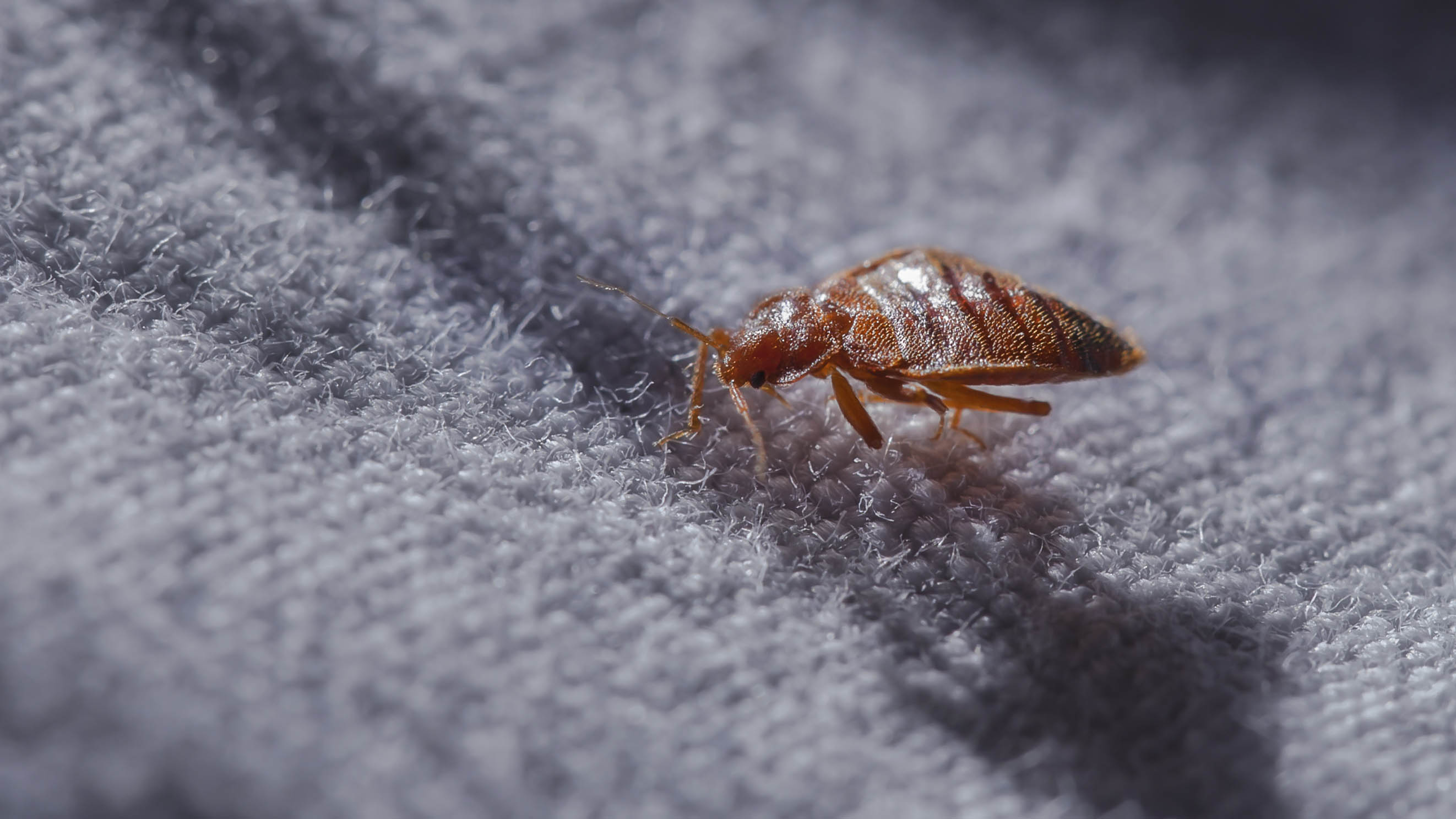
Finally, while bed bugs will naturally hide, you might still see one or two, particularly if you’re dealing with an infestation. They’re roughly 5mm in length, with an oval-shaped body and are a deep reddish-brown color. They’re fairly fast moving for their size (moving up to four feet per minute), but won’t jump or fly. It’s easier to spot a cluster rather than just one, so be sure to check any concealed spaces where they’re likely to congregate undisturbed. Remember, they will often hide near to where you sleep.
If you’ve spotted any of the above signs of bed bugs, make sure you deal with the problem immediately. Bed bugs can quickly multiply and spread, impacting several rooms as well as neighboring houses. Here’s how to get rid of bed bugs for step-by-step guidance on removal with or without chemicals. If all else fails, you can always call in a professional to handle the extermination.
More from Tom's Guide

Katie Mortram used to be a Homes Editor for Tom's Guide, where she oversaw everything from kitchen appliances to gardening tools, as well as smart home tech. Specializing in providing expert advice for cleaning and home manintenance, she now works as Household Advice Editor for Good Housekeeping.
